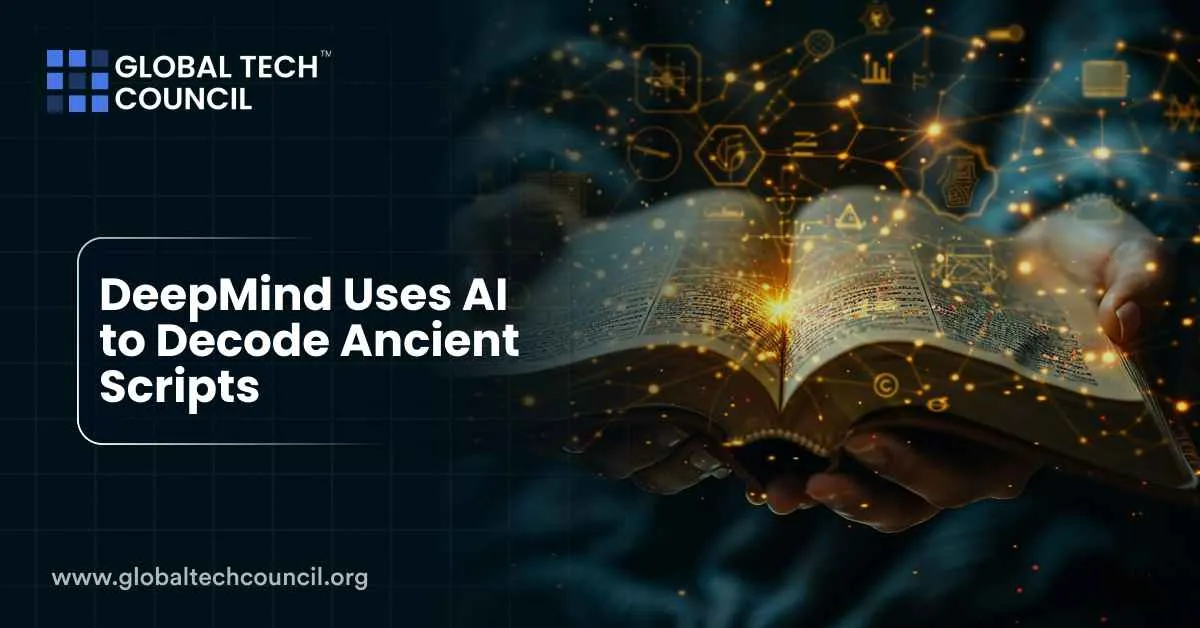
What Is Aeneas and Who Created It?
Aeneas is a machine learning model developed by Google DeepMind. Its main goal is to assist in the analysis of Latin inscriptions from ancient Rome. These inscriptions often appear on stone tablets, monuments, or ruins and are usually damaged or incomplete.
Aeneas was trained using more than 176,000 real Latin inscriptions, taken from established epigraphic databases like EDR, EDH, and EDCS-ELT. The model can fill in missing words, suggest where an inscription was originally carved, and estimate when it was created. It has already been used in real case studies and has received positive feedback from historians.
This is not just a research demo. DeepMind has made Aeneas available through a public interface and shared its dataset and code openly. Anyone can try it out at predictingthepast.com.
How Accurate Is It?
Aeneas shows strong performance in multiple areas. When given a damaged text with a known number of missing characters, it can predict missing words with around 73% accuracy. When the number of missing characters is unknown, its accuracy is still around 58%.
It also does more than fill gaps. Aeneas can predict the time period of an inscription within ±13 years. It can even estimate which of 62 Roman provinces a text came from, with 72 to 73% accuracy. These numbers are impressive considering how fragmented some of the input data is.
Aeneas AI Accuracy by Task
| Task | Accuracy/Performance | Description |
| Predicting missing text (known length) | ~73% | Short gaps in partially damaged texts |
| Predicting missing text (unknown length) | ~58% | Complex gaps where length is unclear |
| Dating inscriptions | ±13 years average error margin | Based on vocabulary and script style |
| Identifying geographical origin | ~72–73% | Assigned to one of 62 Roman provinces |
What Makes Aeneas Different?
Aeneas stands out because it does more than text completion. It can analyze both text and image inputs, which helps when working with inscriptions carved on damaged stone. The model also identifies patterns between texts, connecting one inscription with similar ones from other regions or time periods.
This cross-analysis is a big step forward. Most tools look at a single line of text. Aeneas looks across thousands, finding deeper links. This allows researchers to uncover relationships between regions, communities, and historic events.
The model can also handle gaps of unknown length, which is common in damaged artifacts. Traditional tools struggle with this because they require a fixed format or structure.
Professionals who want to understand the technical side of tools like Aeneas can explore the Deep Tech certification. It covers core AI principles used in advanced models like this.
Real-Life Examples and Use Cases
One of Aeneas’ notable applications was in the analysis of the Res Gestae Divi Augusti, an important Roman inscription. Historians have debated its date for years. Aeneas predicted two plausible timeframes—1 BCE and 10 to 20 CE—which match the historical debate.
In another case, Aeneas analyzed inscriptions from Mainz (Mogontiacum) and found connections to older Roman texts that had not been linked before. This kind of insight helps historians reconstruct cultural and political links that may have been overlooked.
In a study involving historians, 90% of participants said Aeneas improved their interpretation of challenging inscriptions. This shows it’s not just a novelty—it’s a practical tool.
Open Access and Educational Use
One of the best things about Aeneas is that it’s publicly available. The interface at predictingthepast.com is designed for researchers, educators, and museum professionals. It allows users to upload inscription data and get model outputs in real time.
The source code and training data are also available for review. This makes it easier for academics to test new ideas, replicate results, or build on DeepMind’s work. The open approach supports transparency and scientific growth.
Educators and data specialists interested in applying AI in cultural preservation can benefit from the Data Science Certification, which focuses on AI applications in real-world research contexts.
Aeneas and the Future of History Research
Aeneas is already changing how experts study the ancient world. It provides better speed, broader data coverage, and consistent interpretation. But it’s not perfect. The model is focused only on Latin for now, and while it offers high accuracy, it can still make mistakes.
The long-term goal is to expand Aeneas into more languages and deeper contextual reasoning. Tools like this could help decode lost texts, reveal unknown history, and preserve global heritage.
To make the most of these tools, cultural organizations will need experts who understand both AI and humanities. If you’re working at that intersection, the Marketing and Business Certification offers strategic guidance for using AI in museums, archives, and public history platforms.
Key Features of Aeneas for Researchers
| Feature | Benefit | Real-World Use Example |
| Multimodal Input Support | Combines text and image analysis | Decoding stone inscriptions with gaps |
| Parallel Text Discovery | Finds related inscriptions by content | Links texts across Roman provinces |
| Gap Restoration | Handles missing text of unknown length | Useful for damaged historical artifacts |
| Contextual Dating | Estimates date of origin | Timelines for archaeological research |
Final Thoughts
Aeneas shows how AI can make a real impact in humanities and research. It doesn’t replace historians but gives them a faster, more accurate way to explore ancient texts. With public access and open data, it encourages collaboration and innovation.
As AI continues to support academic research, professionals in history, archaeology, and education will benefit from learning how to work with these tools—not just read about them.